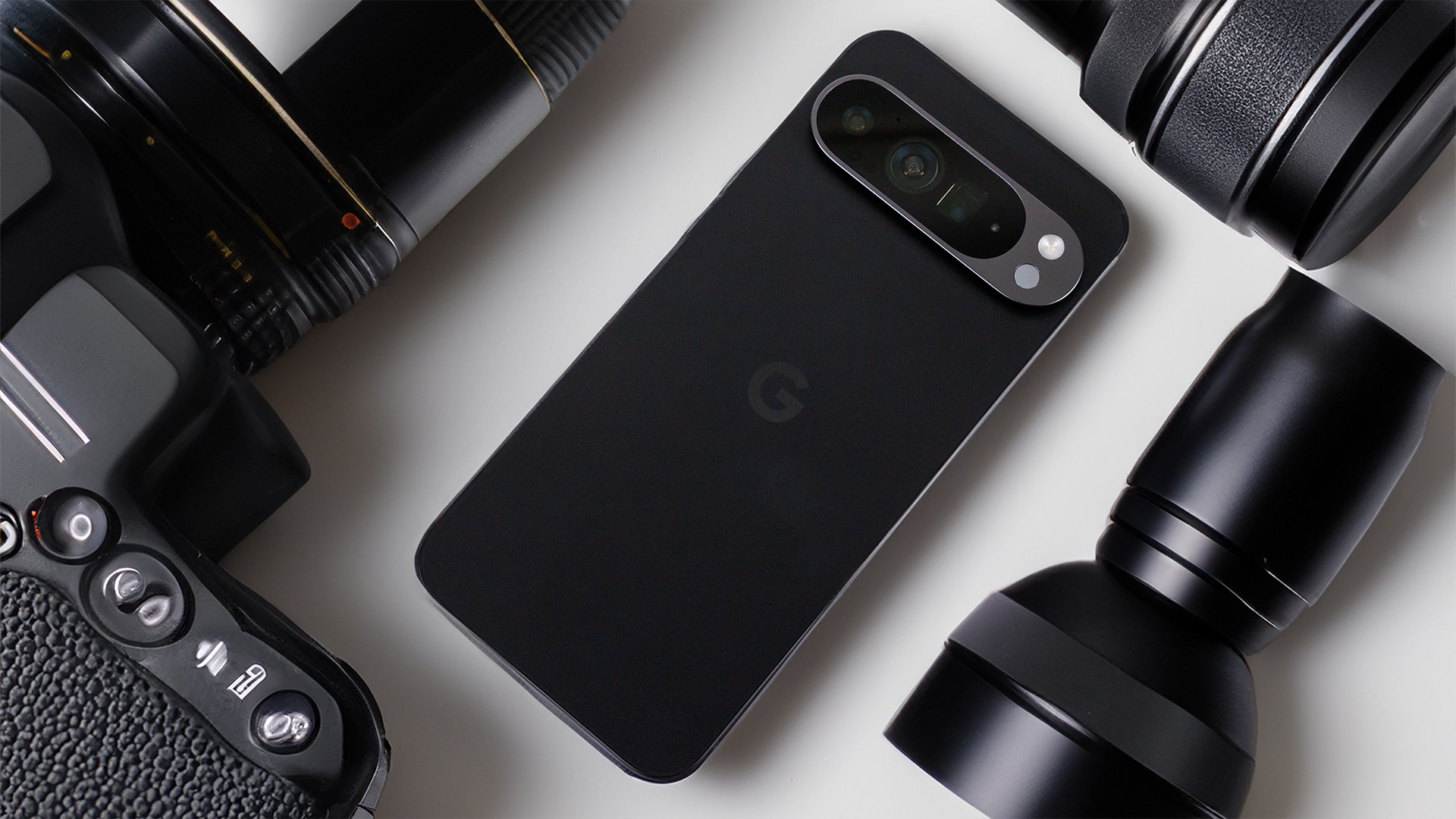
Análise do Google Pixel 9 Pro XL - Smartphone top de linha com uma sensação mais sofisticada, também em termos de preço
Com uma etiqueta de preço XL.
O Google ajustou o Pixel 9 Pro XL da maneira usual para atualizá-lo com a tecnologia mais recente. Isso inclui sete anos completos de atualizações e uma excelente configuração de câmera. Os preços mais uma vez aumentaram bastante, mas nossa análise revelará se isso se justifica.Daniel Schmidt, 👁 Daniel Schmidt (traduzido por DeepL / Ninh Duy) Publicado 🇺🇸 🇩🇪 ...
Veredicto - Um smartphone potente com poucos pontos fracos
Embora o Google Pixel 9 Pro XL possa ser menos XL do que o nome sugere, ele oferece um excelente pacote total que não exige muitos compromissos. Suas câmeras, em particular, apresentam uma qualidade de representação impressionante e são muito flexíveis - de macro a ultra grande angular e zoom. Sua tela é superbrilhante e precisa. Todos os padrões modernos de comunicação também estão presentes, incluindo NFC, UWB, 5G-Sub6 e Wi-Fi 7. O Pixel 9 Pro XL é completado com sete anos de atualizações.
Uma pequena desvantagem é seu SoC comparativamente lento - além disso, o Google continua a contar com o armazenamento UFS 3.1 mais antigo e significativamente mais lento. Não consideramos mais que a versão de 128 GB seja apropriada para um smartphone de ponta em 2024 e isso mantém o preço básico artificialmente baixo. A tela também funciona com uma baixa frequência PWM. Embora os recursos de gravação de vídeo do Pixel 9 Pro XL sejam muito bons, o HDR e a estabilização de imagem de ação só estão disponíveis se a resolução e/ou a taxa de quadros forem reduzidas.
Pro
Contra
Preço e disponibilidade
O senhor pode encomendar o Google Pixel 9 Pro XL na Amazon por US$ 1.099.
Possíveis concorrentes em comparação
Rating | Date | Model | Weight | Drive | Size |
|---|---|---|---|---|---|
| Google Pixel 9 Pro XL Google Tensor G4 ⎘ ARM Mali-G715 MP7 ⎘ 16 GB Memória, 256 GB | 221 g | 256 GB UFS 3.1 Flash | 6.80" 2992x1344 482 PPI OLED | ||
| Samsung Galaxy S24 Ultra Qualcomm Snapdragon 8 Gen 3 for Galaxy ⎘ Qualcomm Adreno 750 ⎘ 12 GB Memória, 256 GB | 232 g | 256 GB UFS 4.0 Flash | 6.80" 3120x1440 505 PPI Dynamic AMOLED 2X | ||
| Apple iPhone 16 Pro Max Apple A18 Pro ⎘ Apple A18 Pro GPU ⎘ 8 GB Memória, 256 GB NVMe | 227 g | 256 GB NVMe | 6.90" 2868x1320 458 PPI Super Retina XDR OLED | ||
| Xiaomi 14 Ultra Qualcomm Snapdragon 8 Gen 3 ⎘ Qualcomm Adreno 750 ⎘ 16 GB Memória, 512 GB | 219.8 g | 512 GB UFS 4.0 Flash | 6.73" 3200x1440 521 PPI AMOLED |
Índice
- Veredicto - Um smartphone potente com poucos pontos fracos
- Especificações
- Case e conectividade - O Pixel 9 Pro XL com Gorilla Glas Victus 2
- Comunicação e software - O Pixel 9 Pro XL ainda vem com Android 14
- Sustentabilidade - O Pixel 9 Pro usa alumínio reciclado
- Câmeras - Quarteto poderoso no Pixel 9 Pro XL
- Tela - OLED superbrilhante com baixa frequência PWM
- Desempenho, emissões e duração da bateria - O Tensor G4 é mais lento do que a concorrência
- Classificação total do Notebookcheck
Especificações
Case e conectividade - O Pixel 9 Pro XL com Gorilla Glas Victus 2
O que seu nome sugere é contradito por seus números: o Pixel 9 Pro XL não é uma versão Pro maior, mas, a rigor, o sucessor real do Pixel 8 Pro. Em termos de tamanho, o Google Pixel 9 Pro é, portanto, um Pixel 9 com os recursos aprimorados do Pro.
A qualidade de construção do Pixel 9 Pro XL é excelente. A frente e o verso são adornados com Corning Gorilla Glass Victus 2, com um acabamento fosco no verso. No entanto, as impressões digitais ainda são claramente visíveis em nossa versão preta. O vidro é cercado por uma moldura de aço inoxidável polido. Os espaços são estreitos e uniformes, e o smartphone quase não faz barulho quando é girado. Apesar de seu poderoso módulo de câmera, o Pixel 9 Pro XL não é pesado. Ele também é à prova de poeira e água, de acordo com a norma IP68.
Fundamentalmente, seus recursos não mudaram. O Pixel possui Bluetooth 5.3, NFC e UWB - e um termômetro infravermelho também está instalado novamente, que pode medir a temperatura da superfície de objetos a curtas distâncias.
A interface física instalada é a USB 3.2 (Gen. 1), que também suporta saída de imagem com fio e pode espelhar o conteúdo exibido. No entanto, isso só funcionou com uma escala ruim durante nosso teste. Sua saída de energia via USB não foi suficiente para alimentar nosso Samsung 980 Pro externo obrigatório para o teste de cópia, por isso recorremos a um Samsung PSSD T7. Aqui, o smartphone Pixel atingiu uma velocidade de transferência de 209,41 MB/s. Os suportes de dados conectados podem ser formatados com FAT32 e exFAT.
Os Top 10
» Os Top 10 Portáteis Multimídia
» Os Top 10 Portáteis de Jogos
» Os Top 10 Portáteis Leves para Jogos
» Os Top 10 Portáteis Acessíveis de Escritório/Empresariais
» Os Top 10 Portáteis Premium de Escritório/Empresariais
» Os Top 10 dos Portáteis Workstation
» Os Top 10 Subportáteis
» Os Top 10 Ultrabooks
» Os Top 10 Conversíveis
» Os Top 10 Tablets
» Os Top 10 Smartphones
» A melhores Telas de Portáteis Analisadas Pela Notebookcheck
» Top 10 dos portáteis abaixo dos 500 Euros da Notebookcheck
» Top 10 dos Portáteis abaixo dos 300 Euros
Comunicação e software - O Pixel 9 Pro XL ainda vem com Android 14
O Google Pixel 9 Pro XL ainda vem com o Android 14 e está preparado para receber atualizações por sete anos. Além dos recursos exclusivos do Pixel, os usuários também podem acessar muitas funções de IA, sobre as quais o senhor pode ler em nossa análise do Pixel 9.
O telefone suporta uma ampla gama de frequências para acessar a Internet em qualquer lugar, portanto, o smartphone do Google deve ser capaz de estabelecer uma conexão em todas as partes do mundo. Com o Wi-Fi 7, o dispositivo suporta WLAN moderna, incluindo a banda de 6 GHz. Em combinação com nosso roteador de referência, o Asus ROG Rapture GT-AXE11000 (Wi-Fi 6E), medimos taxas de dados altas e estáveis.
O Pixel 9 Pro XL pode acomodar um cartão nano SIM, que pode ser complementado com um eSIM. Como alternativa, o senhor pode usar dois eSIMs. Há suporte para chamadas VoLTE e Wi-Fi. A qualidade da chamada do telefone é muito natural, mas a supressão do ruído ambiente atinge seus limites com o barulho alto da rua.
A tela sensível ao toque capacitiva do Pixel 9 Pro XL responde às entradas de forma rápida e precisa, com o motor de vibração linear fornecendo feedback tátil nítido, se necessário. A segurança biométrica é fornecida por um sensor ultrassônico de impressão digital, que reconhece de forma rápida e confiável a impressão armazenada. Como alternativa ou adicionalmente, é possível configurar um reconhecimento facial menos seguro por meio da câmera frontal, embora isso regularmente atinja seus limites no escuro.
| Networking | |
| Google Pixel 9 Pro XL | |
| iperf3 transmit AXE11000 | |
| iperf3 receive AXE11000 | |
| iperf3 transmit AXE11000 6GHz | |
| iperf3 receive AXE11000 6GHz | |
| Samsung Galaxy S24 Ultra | |
| iperf3 transmit AXE11000 | |
| iperf3 receive AXE11000 | |
| iperf3 transmit AXE11000 6GHz | |
| iperf3 receive AXE11000 6GHz | |
| Apple iPhone 16 Pro Max | |
| iperf3 transmit AXE11000 | |
| iperf3 receive AXE11000 | |
| iperf3 transmit AXE11000 6GHz | |
| iperf3 receive AXE11000 6GHz | |
| Xiaomi 14 Ultra | |
| iperf3 transmit AXE11000 | |
| iperf3 receive AXE11000 | |
| iperf3 transmit AXE11000 6GHz | |
| iperf3 receive AXE11000 6GHz | |
Sustentabilidade - O Pixel 9 Pro usa alumínio reciclado
O Google Pixel 9 Pro XL é entregue em uma caixa sem plástico e não há nenhum outro plástico em sua embalagem. O próprio smartphone usa alumínio reciclado e é composto por 18% de materiais reciclados. O Google forneceu um relatório completo de sustentabilidade aqui.
Câmeras - Quarteto poderoso no Pixel 9 Pro XL
A configuração da câmera na parte traseira é o maior ponto de crítica do Pixel 9 e também apresenta um zoom periscópio, que permite uma ampliação óptica de cinco vezes e pode ampliar digitalmente até 30 vezes. Gostamos muito de suas imagens, e as outras duas lentes são idênticas às do Pixel 9.
Na parte frontal, o Google deu ao Pixel 9 Pro XL mais megapixels - agora ele tem 42 MPix, incluindo autofoco. O binning de pixels combina quatro pixels em um superpixel, e é por isso que as imagens finais têm 10 MPix de tamanho. Elas têm um equilíbrio de branco quente e parecem muito harmoniosas e detalhadas.
Os vídeos também ficam ótimos no smartphone Pixel. Na parte frontal, o senhor pode gravar em 4k/60 fps, na melhor das hipóteses, mas sua estabilização poderia ser melhorada e as gravações em HDR são limitadas a 30 fps. A câmera principal vai um passo além e permite a gravação em 4k/60fps com HDR ou 8k/30fps sem HDR. É uma pena que a estabilização de imagem mais forte só seja possível em Full HD a 30 fps (sem otimização de vídeo, com HDR).
Comparação de imagens
Escolha uma cena e navegue pela primeira imagem. Um clique muda a posição nas telas sensíveis ao toque. Um clique na imagem ampliada abre o original em uma nova janela. A primeira imagem mostra a fotografia em escala do dispositivo de teste.
Main cameraMain cameraUltra-wide angle5x zoomLow light

Tela - OLED superbrilhante com baixa frequência PWM
A tela OLED de 6,8 polegadas do Google Pixel 9 Pro XL pode ajustar dinamicamente sua taxa de atualização entre 1 e 120 Hz e oferece uma alta densidade de pixels para uma exibição nítida.
O brilho do painel já é muito alto ao exibir uma tela branca pura e fica ainda mais alto quando a área branca é reduzida (APL18: 2.944 cd/m²). Medimos 2.875 cd/m² ao reproduzir um vídeo HDR.
Embora a cintilação do OLED esteja em um nível muito constante e uniforme, sua frequência de 240 Hz é baixa, o que significa que pessoas sensíveis podem sentir algum desconforto.
| |||||||||||||||||||||||||
iluminação: 86 %
iluminação com acumulador: 2148 cd/m²
Contraste: ∞:1 (Preto: 0 cd/m²)
ΔE Color 0.5 | 0.5-29.43 Ø4.87
ΔE Greyscale 0.8 | 0.5-98 Ø5.1
99% sRGB (Calman 2D)
Gamma: 2.23
| Google Pixel 9 Pro XL OLED, 2992x1344, 6.8" | Samsung Galaxy S24 Ultra Dynamic AMOLED 2X, 3120x1440, 6.8" | Apple iPhone 16 Pro Max Super Retina XDR OLED, 2868x1320, 6.9" | Xiaomi 14 Ultra AMOLED, 3200x1440, 6.7" | |
|---|---|---|---|---|
| Response Times | 6% | 8% | -14% | |
| Response Time Grey 50% / Grey 80% * | 3.08 ? | 3.8 ? -23% | 1.78 ? 42% | 1.55 ? 50% |
| Response Time Black / White * | 0.88 ? | 1.41 ? -60% | 1.03 ? -17% | 1.26 ? -43% |
| PWM Frequency | 240 | 480 100% | 240 0% | 120 -50% |
| Screen | -192% | -119% | -96% | |
| Brightness middle | 2148 | 1317 -39% | 1055 -51% | 997 -54% |
| Brightness | 2050 | 1365 -33% | 1061 -48% | 1002 -51% |
| Brightness Distribution | 86 | 94 9% | 93 8% | 96 12% |
| Black Level * | ||||
| Colorchecker dE 2000 * | 0.5 | 3.4 -580% | 1.5 -200% | 1.6 -220% |
| Colorchecker dE 2000 max. * | 1.4 | 5 -257% | 4.7 -236% | 3.3 -136% |
| Greyscale dE 2000 * | 0.8 | 2.8 -250% | 2.3 -188% | 1.8 -125% |
| Gamma | 2.23 99% | 2 110% | 2.21 100% | 2.19 100% |
| CCT | 6582 99% | 6458 101% | 6625 98% | 6493 100% |
| Média Total (Programa/Configurações) | -93% /
-126% | -56% /
-77% | -55% /
-69% |
* ... menor é melhor
Exibir tempos de resposta
| ↔ Tempo de resposta preto para branco | ||
|---|---|---|
| 0.88 ms ... ascensão ↗ e queda ↘ combinadas | ↗ 0.4135 ms ascensão | |
| ↘ 0.466 ms queda | ||
| A tela mostra taxas de resposta muito rápidas em nossos testes e deve ser muito adequada para jogos em ritmo acelerado. Em comparação, todos os dispositivos testados variam de 0.1 (mínimo) a 240 (máximo) ms. » 2 % de todos os dispositivos são melhores. Isso significa que o tempo de resposta medido é melhor que a média de todos os dispositivos testados (20.8 ms). | ||
| ↔ Tempo de resposta 50% cinza a 80% cinza | ||
| 3.08 ms ... ascensão ↗ e queda ↘ combinadas | ↗ 1.544 ms ascensão | |
| ↘ 1.538 ms queda | ||
| A tela mostra taxas de resposta muito rápidas em nossos testes e deve ser muito adequada para jogos em ritmo acelerado. Em comparação, todos os dispositivos testados variam de 0.165 (mínimo) a 636 (máximo) ms. » 10 % de todos os dispositivos são melhores. Isso significa que o tempo de resposta medido é melhor que a média de todos os dispositivos testados (32.5 ms). | ||
Cintilação da tela / PWM (modulação por largura de pulso)
| Tela tremeluzindo/PWM detectado | 240 Hz Amplitude: 22.9 % | ||
A luz de fundo da tela pisca em 240 Hz (pior caso, por exemplo, utilizando PWM) . A frequência de 240 Hz é relativamente baixa, portanto, usuários sensíveis provavelmente notarão cintilação e sentirão fadiga ocular na configuração de brilho indicada e abaixo. [pwm_comparison] Em comparação: 53 % de todos os dispositivos testados não usam PWM para escurecer a tela. Se PWM foi detectado, uma média de 8516 (mínimo: 5 - máximo: 343500) Hz foi medida. | |||
Série de medições com nível de zoom fixo e diferentes configurações de brilho (A curva de amplitude no brilho mínimo parece plana, mas isso se deve à escala. A caixa de informações mostra a versão ampliada da amplitude no brilho mínimo).
Desempenho, emissões e duração da bateria - O Tensor G4 é mais lento do que a concorrência
O Pixel 9 Pro XL é equipado com o Google Tensor G4que é suportado por 16 GB de RAM. Isso permite um desempenho suave do sistema, mas mesmo um Snapdragon 8 Gen 2 de dois anos oferece mais potência de CPU. Para um smartphone com uma oferta de atualização tão longa, gostaríamos de ver mais desempenho. A placa de vídeo integrada Mali-G715 MP7 integrada também não oferece suporte ao traçado de raios baseado em hardware.
As temperaturas da superfície do Pixel 9 Pro XL permaneceram inofensivas em todos os momentos, mas o SoC foi acelerado significativamente no teste de estresse 3DMark, bem como no agora comparativamente fácil teste de estresse Wild Life.
Os dois alto-falantes do smartphone do Google são capazes de produzir uma boa paisagem sonora e uma gama decente de codecs é fornecida via Bluetooth. No entanto, o Pixel ainda não é compatível com o Auracast.
O tempo de execução foi impressionante, chegando a mais de 16,5 horas durante nosso teste de Wi-Fi com um brilho de tela ajustado (150 cd/m²). O Pixel 9 Pro XL pode ser carregado com um adaptador de energia (USB PD) que fornece pelo menos 7,5 watts, com suporte a um máximo de 37 watts. Durante nosso teste, uma carga completa com uma fonte de alimentação da Motorola (125 watts, USB PD 3.0) levou exatamente uma hora e meia. A marca de 50% foi atingida após 27 minutos e 80% após 44 minutos.
| PCMark for Android - Work 3.0 | |
| Samsung Galaxy S24 Ultra | |
| Xiaomi 14 Ultra | |
| Média da turma Smartphone (4507 - 27169, n=196, últimos 2 anos) | |
| Google Pixel 9 Pro XL | |
| Média Google Tensor G4 (11823 - 13948, n=4) | |
| Geekbench AI | |
| Single Precision TensorFlow NNAPI 1.1 | |
| Média da turma Smartphone (122 - 4619, n=45, últimos 2 anos) | |
| Média Google Tensor G4 (376 - 771, n=4) | |
| Google Pixel 9 Pro XL | |
| Half Precision TensorFlow NNAPI 1.1 | |
| Google Pixel 9 Pro XL | |
| Média Google Tensor G4 (4176 - 4754, n=4) | |
| Média da turma Smartphone (122 - 32432, n=45, últimos 2 anos) | |
| Quantized TensorFlow NNAPI 1.1 | |
| Média Google Tensor G4 (6269 - 6451, n=4) | |
| Google Pixel 9 Pro XL | |
| Média da turma Smartphone (118 - 44657, n=45, últimos 2 anos) | |
| Google Pixel 9 Pro XL | Samsung Galaxy S24 Ultra | Xiaomi 14 Ultra | Honor Magic6 Pro | Média 256 GB UFS 3.1 Flash | Média da turma Smartphone | |
|---|---|---|---|---|---|---|
| AndroBench 3-5 | 33% | 78% | 101% | -11% | 3% | |
| Sequential Read 256KB | 1850.5 | 3610.25 95% | 4102.56 122% | 3923.31 112% | 1737 ? -6% | 2030 ? 10% |
| Sequential Write 256KB | 1280.56 | 1893.63 48% | 3095.36 142% | 3678.35 187% | 1164 ? -9% | 1646 ? 29% |
| Random Read 4KB | 310.88 | 437.12 41% | 362.88 17% | 415.68 34% | 286 ? -8% | 282 ? -9% |
| Random Write 4KB | 398.27 | 181.55 -54% | 527.15 32% | 678.39 70% | 319 ? -20% | 325 ? -18% |
Temperatura
(±) A temperatura máxima no lado superior é 42.4 °C / 108 F, em comparação com a média de 35.1 °C / 95 F , variando de 21.9 a 63.7 °C para a classe Smartphone.
(±) A parte inferior aquece até um máximo de 42.3 °C / 108 F, em comparação com a média de 33.9 °C / 93 F
(+) Em uso inativo, a temperatura média para o lado superior é 27.4 °C / 81 F, em comparação com a média do dispositivo de 32.8 °C / ### class_avg_f### F.
3DMark stress test
Alto-falantes
Google Pixel 9 Pro XL análise de áudio
(+) | os alto-falantes podem tocar relativamente alto (###valor### dB)
Graves 100 - 315Hz
(-) | quase nenhum baixo - em média 19.5% menor que a mediana
(±) | a linearidade dos graves é média (10.4% delta para a frequência anterior)
Médios 400 - 2.000 Hz
(±) | médios mais altos - em média 5.1% maior que a mediana
(+) | médios são lineares (4.3% delta para frequência anterior)
Altos 2 - 16 kHz
(+) | agudos equilibrados - apenas 4.4% longe da mediana
(+) | os máximos são lineares (4.5% delta da frequência anterior)
Geral 100 - 16.000 Hz
(+) | o som geral é linear (14.9% diferença em relação à mediana)
Comparado com a mesma classe
» 1% de todos os dispositivos testados nesta classe foram melhores, 2% semelhantes, 97% piores
» O melhor teve um delta de 12%, a média foi 36%, o pior foi 134%
Comparado com todos os dispositivos testados
» 18% de todos os dispositivos testados foram melhores, 4% semelhantes, 78% piores
» O melhor teve um delta de 4%, a média foi 24%, o pior foi 134%
Samsung Galaxy S24 Ultra análise de áudio
(+) | os alto-falantes podem tocar relativamente alto (###valor### dB)
Graves 100 - 315Hz
(-) | quase nenhum baixo - em média 21.2% menor que a mediana
(+) | o baixo é linear (5.7% delta para a frequência anterior)
Médios 400 - 2.000 Hz
(±) | médios reduzidos - em média 5.6% menor que a mediana
(+) | médios são lineares (4.9% delta para frequência anterior)
Altos 2 - 16 kHz
(±) | máximos mais altos - em média 6.3% maior que a mediana
(+) | os máximos são lineares (3.2% delta da frequência anterior)
Geral 100 - 16.000 Hz
(±) | a linearidade do som geral é média (17.6% diferença em relação à mediana)
Comparado com a mesma classe
» 12% de todos os dispositivos testados nesta classe foram melhores, 7% semelhantes, 81% piores
» O melhor teve um delta de 12%, a média foi 36%, o pior foi 134%
Comparado com todos os dispositivos testados
» 32% de todos os dispositivos testados foram melhores, 8% semelhantes, 60% piores
» O melhor teve um delta de 4%, a média foi 24%, o pior foi 134%
Tempos de execução
| Battery Runtime - WiFi Websurfing | |
| Apple iPhone 16 Pro Max | |
| Samsung Galaxy S24 Ultra | |
| Média da turma Smartphone (476 - 3244, n=206, últimos 2 anos) | |
| Google Pixel 9 Pro XL | |
| Xiaomi 14 Ultra | |
Classificação total do Notebookcheck
O Google Pixel 9 Pro XL oferece um pacote geral sólido com excelentes câmeras e uma tela brilhante e precisa. Ele suporta padrões de comunicação modernos e está preparado para receber sete anos de atualizações. As desvantagens incluem o SoC lento, o armazenamento UFS 3.1 mais antigo e a baixa frequência PWM da tela. Seus recursos de gravação de vídeo são bons, mas o HDR e a estabilização de ação são limitados.
Google Pixel 9 Pro XL
- 10/30/2024 v8
Daniel Schmidt
Transparência
A seleção dos dispositivos a serem analisados é feita pela nossa equipe editorial. A amostra de teste foi fornecida ao autor como empréstimo pelo fabricante ou varejista para fins desta revisão. O credor não teve influência nesta revisão, nem o fabricante recebeu uma cópia desta revisão antes da publicação. Não houve obrigação de publicar esta revisão. Nunca aceitamos compensação ou pagamento em troca de nossas avaliações. Como empresa de mídia independente, a Notebookcheck não está sujeita à autoridade de fabricantes, varejistas ou editores.
É assim que o Notebookcheck está testando
Todos os anos, o Notebookcheck analisa de forma independente centenas de laptops e smartphones usando procedimentos padronizados para garantir que todos os resultados sejam comparáveis. Desenvolvemos continuamente nossos métodos de teste há cerca de 20 anos e definimos padrões da indústria no processo. Em nossos laboratórios de teste, equipamentos de medição de alta qualidade são utilizados por técnicos e editores experientes. Esses testes envolvem um processo de validação em vários estágios. Nosso complexo sistema de classificação é baseado em centenas de medições e benchmarks bem fundamentados, o que mantém a objetividade.





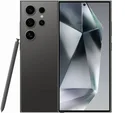


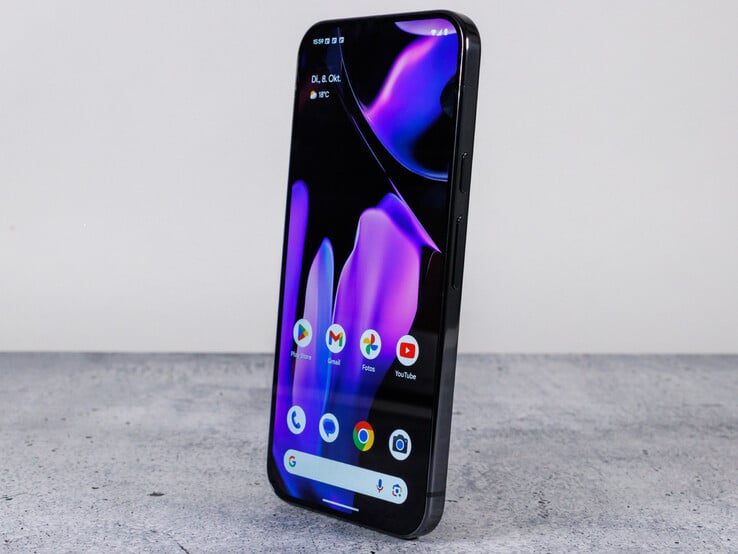








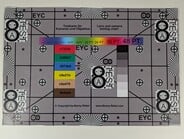



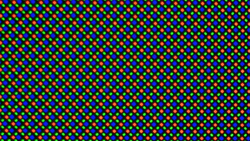
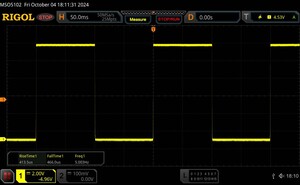
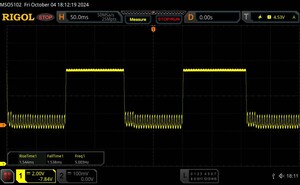
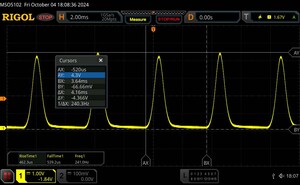





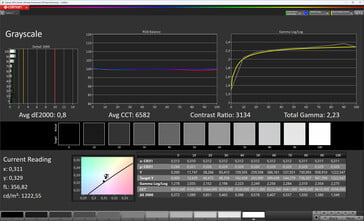


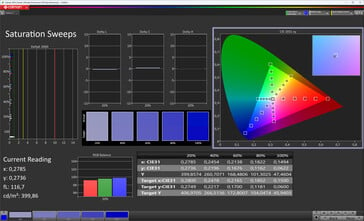
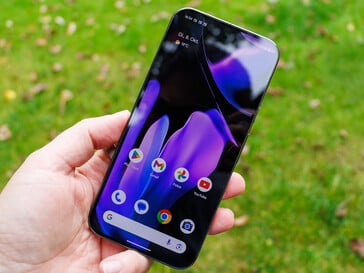

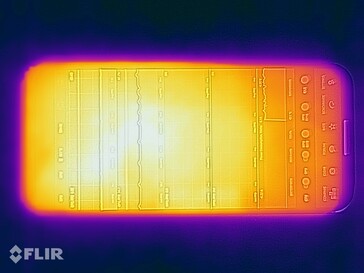
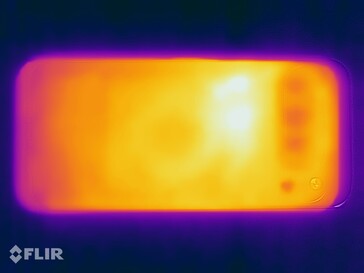
 Total Sustainability Score:
Total Sustainability Score: 








